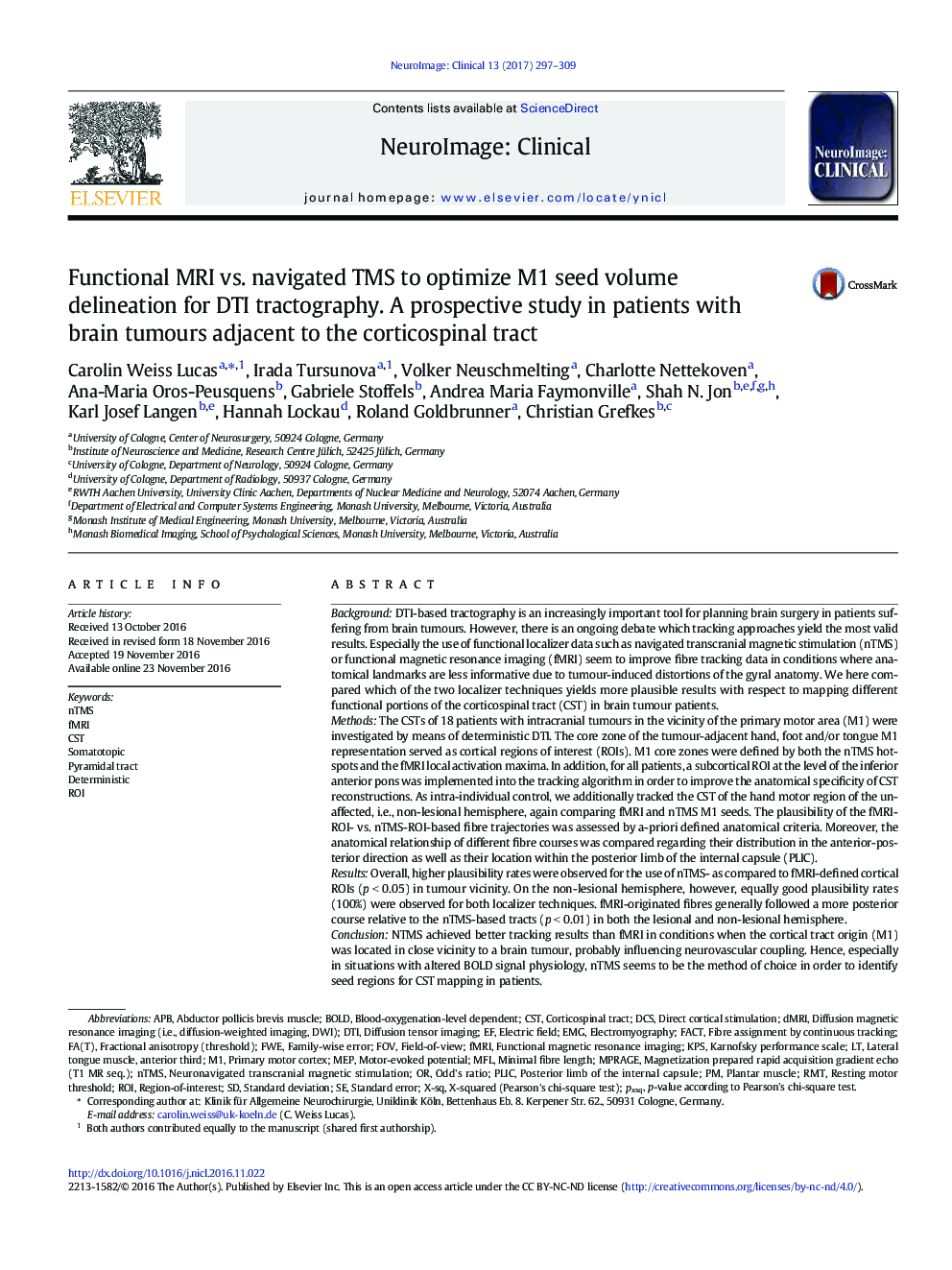| Article ID | Journal | Published Year | Pages | File Type |
|---|---|---|---|---|
| 8688896 | NeuroImage: Clinical | 2017 | 13 Pages |
Abstract
NTMS achieved better tracking results than fMRI in conditions when the cortical tract origin (M1) was located in close vicinity to a brain tumour, probably influencing neurovascular coupling. Hence, especially in situations with altered BOLD signal physiology, nTMS seems to be the method of choice in order to identify seed regions for CST mapping in patients.
Keywords
FWEMFLneuronavigated transcranial magnetic stimulationnTMSKPSFOVAPBRMTDCsMPRAGEROIDTIBOLDMEPCStdMRIresting motor thresholdEMGelectromyographystandard deviationPosterior limb of the internal capsuledirect cortical stimulationdiffusion tensor imagingfunctional magnetic resonance imagingfMRIDeterministicFACTstandard errorfamily-wise errorPyramidal tractcorticospinal tractAbductor pollicis brevis muscleprimary motor cortexKarnofsky performance scaleregion-of-interestElectric fieldfield-of-viewPLICmotor-evoked potential
Related Topics
Life Sciences
Neuroscience
Biological Psychiatry
Authors
Carolin Weiss Lucas, Irada Tursunova, Volker Neuschmelting, Charlotte Nettekoven, Ana-Maria Oros-Peusquens, Gabriele Stoffels, Andrea Maria Faymonville, Shah N. Jon, Karl Josef Langen, Hannah Lockau, Roland Goldbrunner, Christian Grefkes,
